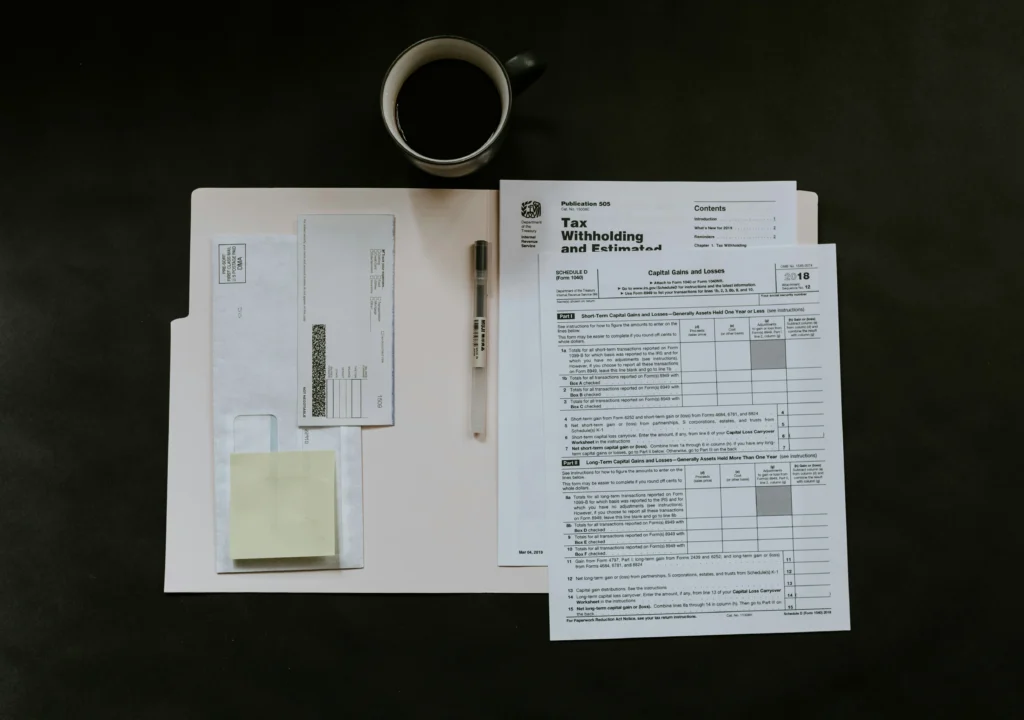Introduction
Discover a world of possibilities as we invite you to explore the best in real estate. You know how to e-verify your income tax return. But shall we learn now? So, let’s know about income tax returns.

Table of count
- Introduction
- ITR Verification Time Limit
- Income Tax Returns Step Wise
- E-Verify Through Clear Tax
- E-Verification Through Aadhaar OTP
- E-Verification Through Existing EVC
- Using Digital Signature Certificate (DSC)
- E-Verification Through Net Banking
- EVC Through DEMAT Account
- EVC Through the Bank ATM Option (Offline)
To complete the return filing process, verification of your Income Tax Return (ITR) is mandatory. If you do not verify it in time, your ITR will be treated as invalid, which means you may not file your return.
ITR Verification Time Limit
CBDT has reduced the ITR verification time limit to 30 days (from 120 days) from the date of submission of the return. The new rule will apply to returns filed online. E-verification is the most convenient and instant method to verify your ITR. However, if you don’t want to do e-verification, you have the option to verify it by sending a physical copy of ITR-V.
Income Tax Returns Step Wise
- E-verification through ClearTax
- Generate Aadhaar OTP
- Existing Aadhaar OTP
- Existing EVC
- Digital Signature Certificate (DSC)
- Generate EVC through a bank account
- Generate EVC through Net Banking
- Generate EVC through DEMAT account.
- Generate EVC through the bank ATM option (offline).
E-Verify Through Clear Tax
- After submitting your return, you can click on ‘e-verify now’ and complete the verification instantly. However, if you lost the e-verification at the time of filing the return, log in to your account on Cleartax and navigate to the ‘My Tax Returns’ option.
- You have two options to complete e-verification: through an OTP sent to your Aadhaar-registered mobile number or through Bank EVC. Select your preferred option and enter OTP or Bank EVC on the next screen.
- Your refund will be e-verified, and you will see a success message with a receipt number. You will also receive an email confirmation from the Income Tax Department.
E-Verification Through Aadhaar OTP
- Log in to your income tax e-filing account. Under the ‘e-file’ tab > select ‘Income Tax Returns’ > then ‘e-verify return‘.
- If you do not have an Aadhaar OTP available, Select the option ‘I want to verify using OTP on my mobile number on Aadhaar’.
- You will see a pop-up window on the screen. Tick the checkbox ‘I agree to verify my Aadhaar details’ and then click on ‘Generate Aadhaar OTP’.
- Enter the 6-digit OTP received on your registered mobile number and click on the ‘Verify’ button. After a successful submission, your ITR will be verified.
E-Verification Through Existing EVC
- If you already have an EVC code, select ‘I already have an Electronic Verification Code (EVC)’.
- Enter the EVC and click on ‘Continue’.
Using Digital Signature Certificate (DSC)
If your books of accounts are audited, the return must be verified using a Digital Signature Certificate (DISC).
- On the e-Verify page, select the option ‘I want to e-Verify using a Digital Signature Certificate (DSC)’.
- Now download and install ’emsigner utility’.
- After you have downloaded and installed the emsigner utility, select ‘I have downloaded and installed the emsigner utility’ and the ‘Continue’ option.
- Add ‘Provider’, ‘Certificate’, and ‘Provider Password’ on the Data Sign page. Then, just click on the ‘Sign’ button.
E-Verification Through Net Banking
- Select the ‘Through Net Banking’ option and click on ‘Continue’.
- Select your bank and click on ‘Continue‘.
- Select your bank and click on ‘Continue‘.
- mark the disclaimer and ‘Continue‘.
- You will be redirected to your bank net banking portal login page.
- Enter your net banking credentials
- You will have an option to ‘E-Verify Your Return‘. Select it.
- You will be redirected to the e-filing portal.
- Go to the relevant ITR form and click on ‘e-verify’.
EVC Through DEMAT Account
- Verification of ITR through a demat account is similar to verification through a bank account.
- The only difference is that the EVC will be generated and sent to your mobile number and email ID registered with your pre-verified and EVC-enabled Demat account.
- On the ‘E-Verify’ page, select ‘Through Demat Account’ and click ‘Continue’
- Enter the received EVC and click on the ‘e-Verify‘ button.
EVC Through the Bank ATM Option (Offline)
There is another offline method to generate EVC. It is through bank ATM cards. This facility is available only to limited banks like Canara Bank, Axis Bank, Central Bank of India, SBI, ICICI Bank, IDBI Bank, and Kotak Mahindra Bank. All you need to do is visit your bank’s ATM and swipe your ATM card.
Conclusion
As we conclude your visit to Openplot.com, we want to express our gratitude for entrusting us with your real estate aspirations. Filing of ITR benefits the taxpayer and the country. Taxpayer can claim refunds, carry forward losses. Taxpayers can use Form ITR-U to correct any errors or omissions in their returns up to two years after the relevant assessment year. ITR is a form in which taxpayers report their income and applicable tax to the Income Tax Department.
Also read: Are you familiar with Property Tax?